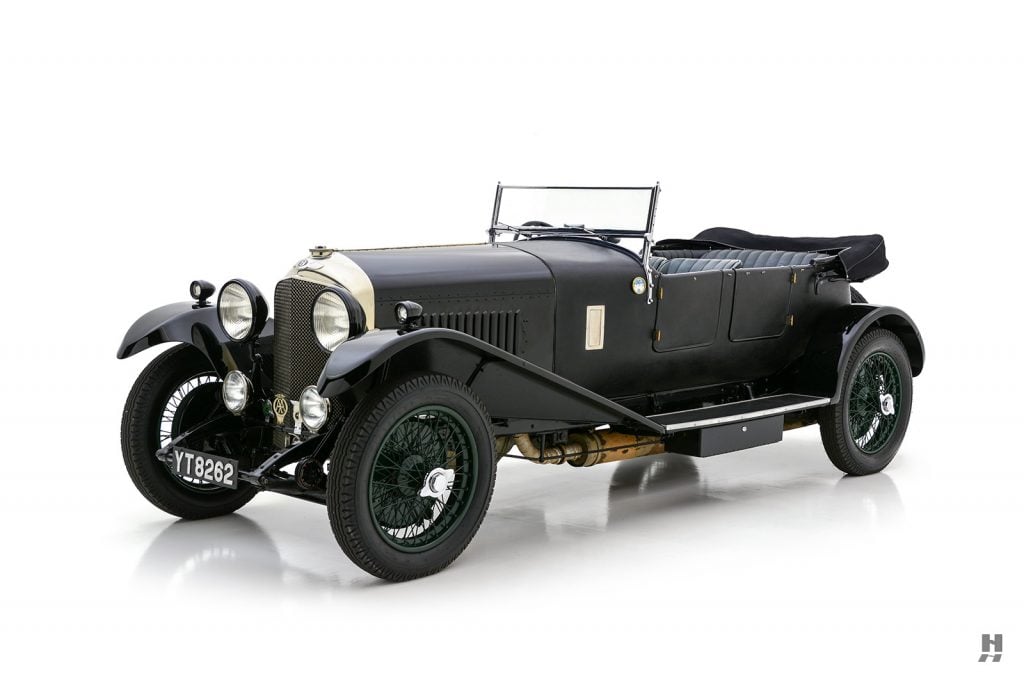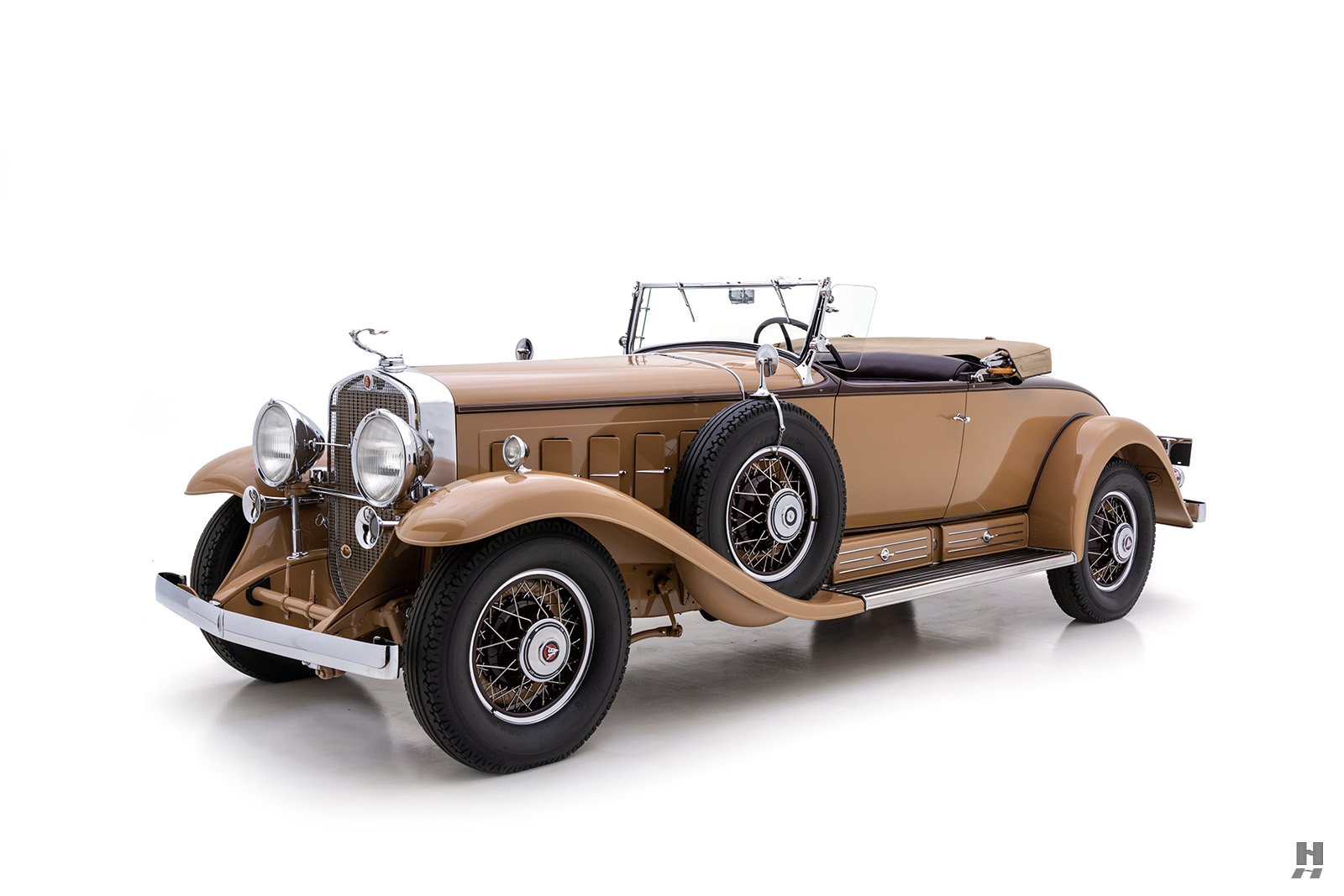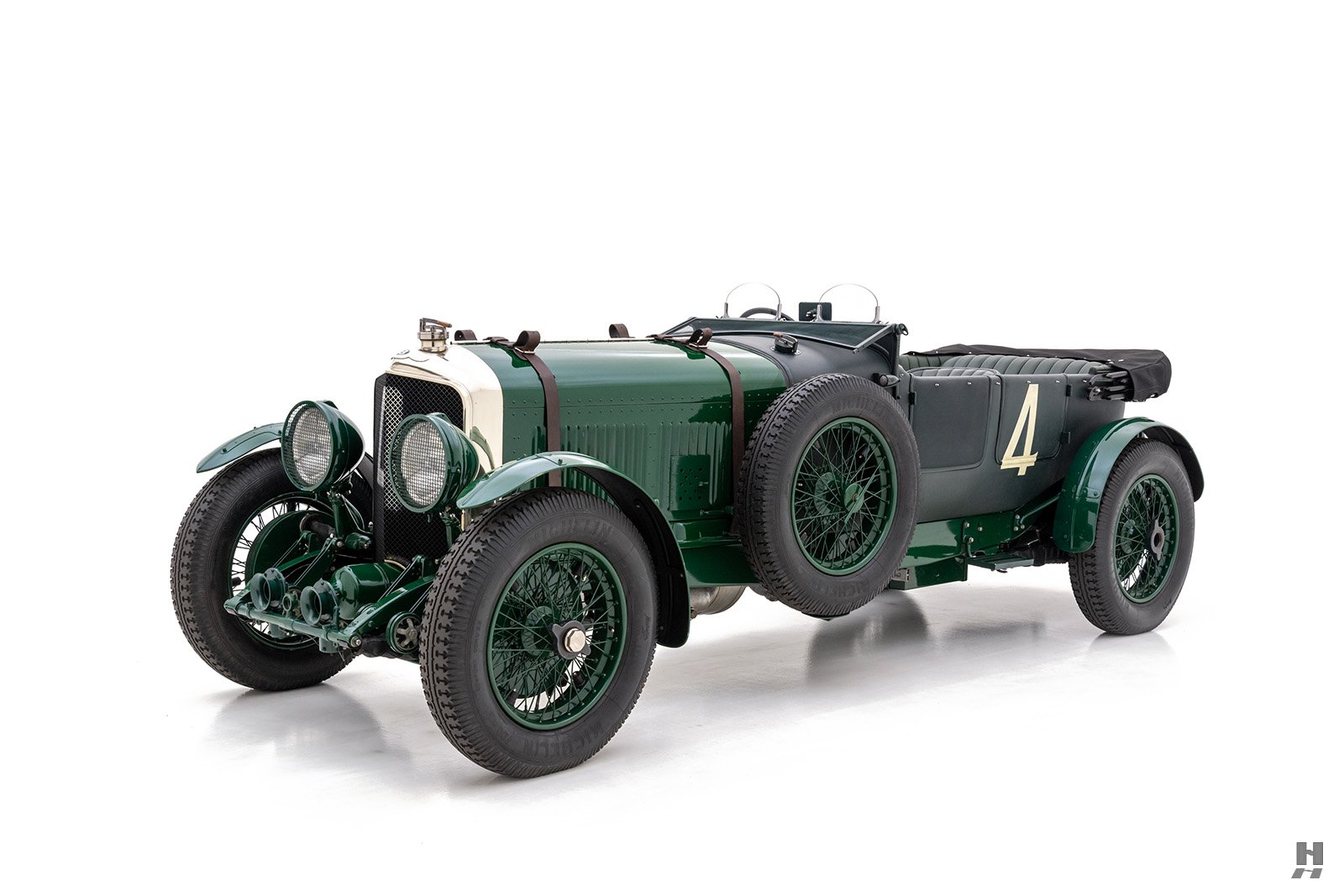Following up on the success of the inaugural 3-Litre model, W.O. Bentley supplemented the line with the big six-cylinder 6 ½ Litre, which he offered to accommodate growing customer demand for larger, heavier, and increasingly luxurious coachwork. The 6 ½ and the high-performance Speed Six derivative served as the flagships of the marque - powerful touring cars built to compete with Rolls-Royce's New Phantom. By 1927, the four-cylinder 3-Litre reached the end of its development, and Bentley needed a suitable replacement. Unlike Rolls-Royce, who remained staunchly opposed to participating in motorsport, Bentley's core audience remained the racing fraternity. While the 3-liter had more than proven its worth on the circuit, the time had come for a stronger and more powerful variant to take its place and uphold Bentley's sporting honor.
The 3-litre served as the blueprint for the new car, which retained the same four-cylinder, sixteen-valve, overhead-cam layout, albeit with displacement punched out to 4,398 cubic centimeters. The chassis, brakes, and gearbox were suitably upgraded and strengthened to handle the additional output of the new engine. The new 4 ½ Litre was powerful and fast, proving itself at LeMans and elsewhere in the hands of the Works "Bentley Boys." As before, Bentley supplied a running chassis to coachbuilders, with the choice of body up to the dealer or client. Vanden Plas remained Bentley's favored coachbuilder, and they constructed the majority of the bodies for the Cricklewood-built cars, which ranged from sporty open tourers to more formal saloons and coupes. The 4 ½ Litre remains the quintessential Vintage Bentley, supported by a passionate and knowledgeable group of owners who take great pride in using their cars as W.O. Bentley originally intended.
It is with great pleasure that we offer this superb 1928 Bentley 4 ½-Litre, chassis number ST3006. This incredible W.O. Bentley is only the sixth 4 ½-Litre chassis built, and the first of the model to feature the now-iconic sports four-seater coachwork by Vanden Plas. A fascinating and meticulously researched report by Dr. Clare Hay reveals this car's extraordinary history, and it stands as one of the most complete and authentic 4 ½-Litres extant – retaining its factory original chassis, engine, gearbox, coachwork, rear axle, and numerous other components. It presents today in excellent condition, with the honest character preferred by Bentley enthusiasts, acquired through years of enjoyment and care.
Chassis number ST3006 rides on the standard 10' 10" wheelbase chassis, and it was first registered in September of 1927, just ahead of the 4 ½-Litre model's official debut at the Olympia Motor Show in October. According to Dr. Hay, the factory allocated ST3006 as a works demonstrator, specified with open sports touring coachwork. The chassis record shows "Our Own Body Order," meaning it was ordered directly from Vanden Plas by Bentley Motors, and approved by the factory on completion. Elements of the handsome coachwork (body number 1408) include long wings, painted bonnet, single rear-mounted spare, and American-made Zapon fabric covering the scuttle and body. Dr. Hay believes the wings, chassis, and wheels of ST3006 were painted green, with an unknown lighter shade used on the body. Vanden Plas' records also show the interior was in green Connolly no. 34 leather and black cotton duck fabric used for the weather equipment. Moderately popular in its day, the open sports tourer by Vanden Plas is now one of the most desirable – and most copied – bodies to grace a pre-war Bentley chassis. Images of the freshly completed ST3006 taken by Bentley's in-house photographer Chas K. Bowers featured in the official Bentley Motors 4 ½-Litre catalogue. After its time in the spotlight, ST3006 was immediately put into service by the works sales department to demonstrate to dealers and clients.
As part of its demonstrator duties, ST3006 appeared in the May 1928 issues of the famed British publication The Motor. Tested at the legendary Brooklands circuit, The Motor lavished praise on the car in a typically understated British fashion. They declared it "a 90 m.p.h. sports car" with "lightning getaway and ease of control." The test concluded with the author proclaiming the car to be "a real thoroughbred, with extremely fine performance" and remarking how well Bentley's success in motorsport translates to the road. A reproduction of the full article, complete with photos, is part of the Hay Report.
By the time it transferred to its first official private owner on June 11th, 1929, ST3006 had accrued 37,680 miles, most of which were put on by factory test driver and "Bentley Boy" Frank Clement as he toured dealers, to show off the latest offering. Factory service records during this time reveal how it returned to Works Service for an engine overhaul, decarbonizing, and an updated clutch. The first private owner was a Bentley enthusiast named H.C. Martineau of London, likely trading his 1928 6 ½-Litre against this car. At various times while in Martineau's care, he brought it to the factory for a new Bluemels steering wheel (believed to be the one still on the car), Pullswell silencer and in September 1929, a new radiator from stock (No. C192), which it still wears to this day. In 1931, it received a pair of reconditioned SU "Sloper" carburetors, which, again, remain on the car.
By August 1935, ST3006 had a new owner with Mr. G.F. Kennedy of London. It continued to receive regular service and maintenance, with factory records going all the way through 1940 when Rolls-Royce sold off the remaining spares and transferred services to McKenzies Garages. Subsequent owners are well-documented in the history report, showing the car in Britain through 1952 when it came to the States with Col. W.A. Howkins. Members of the Howkins family lovingly maintained it through 1988, when it returned to the UK with a new owner. The most recent owner acquired the car in 2001 and has continued to be a faithful steward of its remarkable history.
Relatively early in its life, the car was repainted in its current livery of black with Bentley Green wheels. Later, the interior was reupholstered in green Connolly leather per the 1928 specification. While it is a restored car, the owners took great care to maintain as many original features as possible. The paint and coachwork are highly attractive and in excellent condition, with many of the body fittings and details dating to the 1930s. In the inspection report, Dr. Hay noted that finding the Vanden Plas body number "1408" on seat drop plates, the spare tire triangle, rear seat spring case, and elsewhere was akin to discovering a famous artist's signature on a painting – such is the rarity of finding a genuine VdP sports tourer body. While the body upholstery has been replaced, it is very true to original specification, and it now displays a fabulously inviting patina that suits the car's road-ready character.
Mechanically, ST3006 is both highly original and comprehensively prepared for regular use. It is a veteran of numerous rallies, including a run from Vancouver to Anchorage, Alaska, and back. It retains its original engine, original gearbox per the road-test notes, original chassis, steering box, and rear axle. Fittings like the carburetors and magnetos are also consistent with factory build and service records.
Given their prowess as driver's cars and racing cars and the propensity for "gentleman drivers" to leave the track at speed, very few 4 ½-Litre Bentleys survived quite so comprehensively intact as ST3006. Its sale presents a rare opportunity to acquire one of the best-known and most desirable examples of the breed, suitable for entry into the world's most exclusive driving and concours events.
Offers welcome and trades considered
Sorry this car has been sold. Are you looking to buy or sell a car like this? Contact a representative
For immediate assistance please call us at +1-314-524-6000 or please fill out the following form and a member of our team will contact you.











































